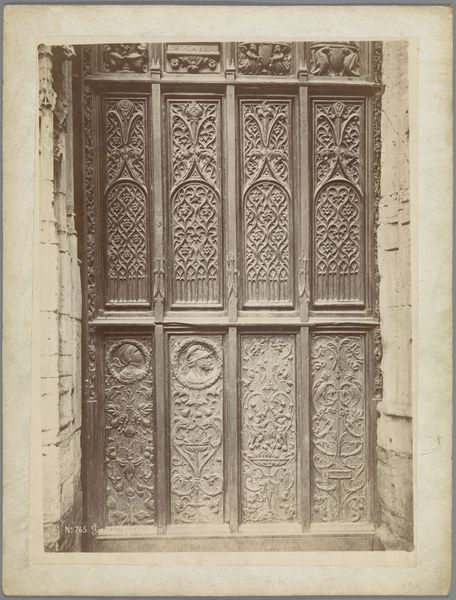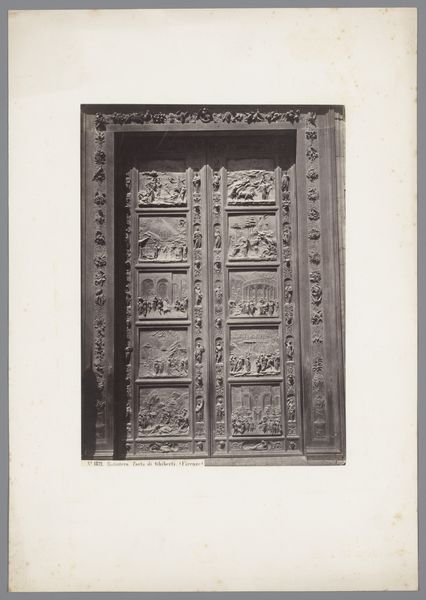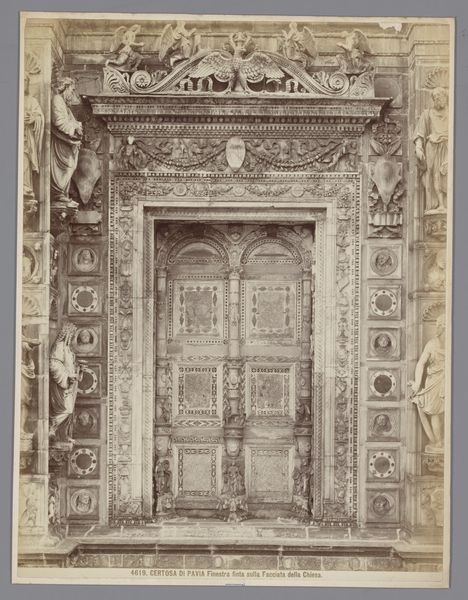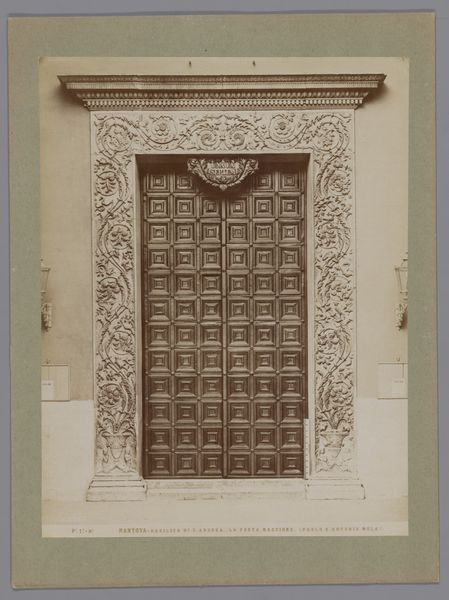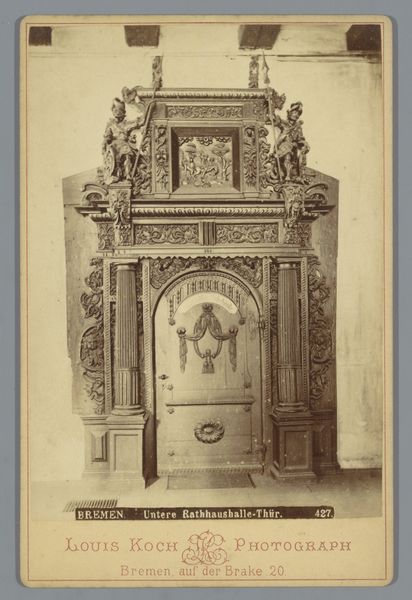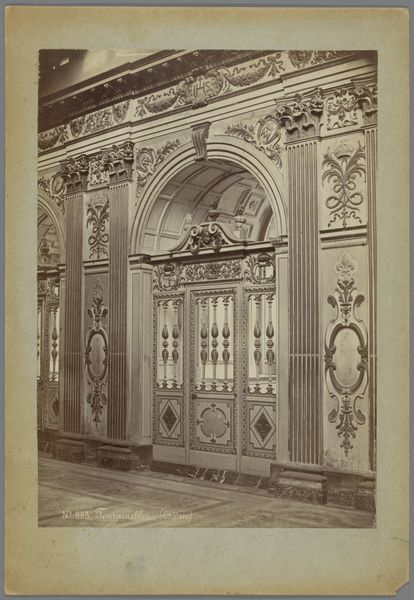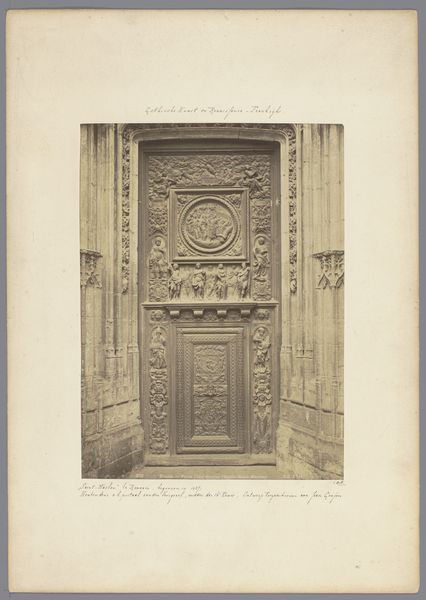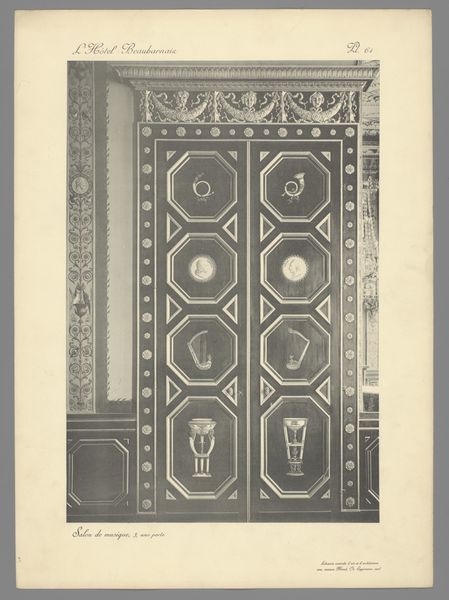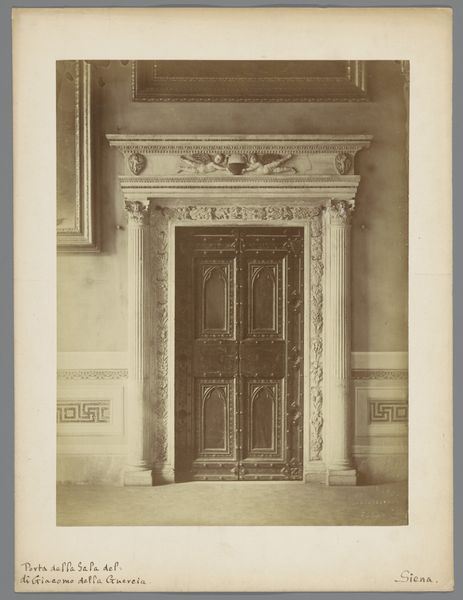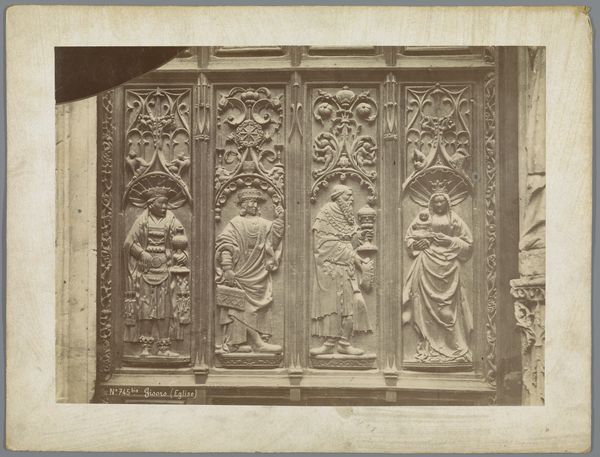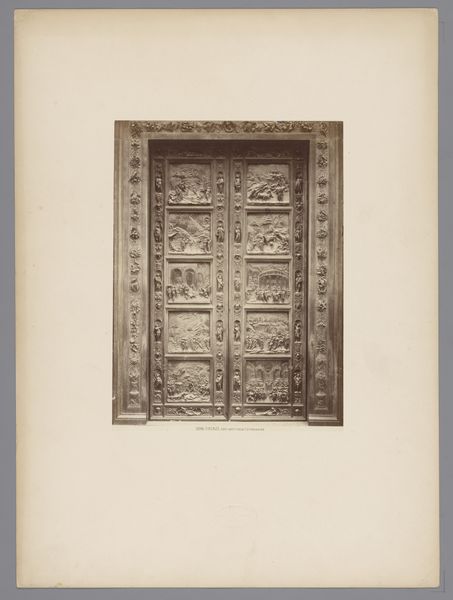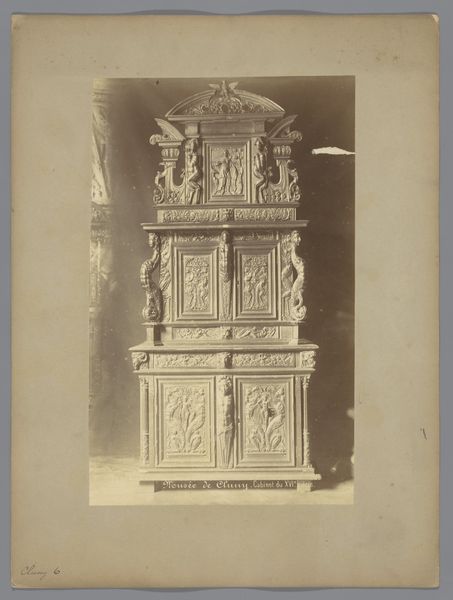
Twee gipsafgietsels van deuren met reliëf in het Musée des monuments français te Parijs c. 1875 - 1900
0:00
0:00
Dimensions: height 351 mm, width 248 mm
Copyright: Rijks Museum: Open Domain
Curator: This photograph by Médéric Mieusement, taken between 1875 and 1900, captures plaster casts of doors adorned with relief carvings. They were located in the Musée des monuments français in Paris. What strikes you first? Editor: An immediate sense of opulence and the sheer labor involved. Look at the intricate detailing. I can't help but think of the hands that painstakingly carved these designs, their working conditions, and the whole social structure supporting such ornate craftsmanship. Curator: Absolutely. The creation of these doors would have involved numerous artisans, each contributing to the final product. The material itself, likely plaster, speaks to a conscious decision to replicate—a process crucial for dissemination. Photography enables further distribution beyond the museum walls. Editor: Right. Plaster, as a readily available and easily molded material, democratized access to these iconic architectural details. However, consider how that act of replication shifts the power dynamic, making these once exclusive designs accessible, potentially challenging notions of artistic authenticity and ownership. Who decides what gets memorialized and displayed in a museum in the first place? Curator: Good point. The Musée des monuments français served as a repository of architectural fragments, rescuing them from destruction during periods of social upheaval. The casts allowed scholars and the public to study historical styles and techniques without traveling to the original sites. We also can not disregard the symbolic importance. These neoclassical door carvings—presumably inspired by ancient Greek and Roman art—functioned as powerful statements about civic identity, social hierarchies, and imperial ambitions. Editor: True. By focusing on these details, were they aiming to celebrate and educate or subtly reinforce prevailing power structures by elevating the Classical past? And where do images of these doors fit within a broader socio-political environment when access to these images—both material and representational—is extremely unequal? Curator: Precisely. This photographic representation extends its accessibility, yet it still operates within systems of display. Consider the implications of presenting architecture as isolated fragments—especially in contrast to their original location and design purpose. Editor: I agree, it’s complicated. Appreciating craftsmanship requires unpacking power dynamics, ensuring access, and dismantling hierarchical narratives, which impact our access and relation to art itself. Curator: Indeed. Perhaps pondering these questions helps us to appreciate Mieusement’s photograph on an additional level—it becomes less of an itemized capture and further, a space of historical and societal understanding. Editor: Well said. It urges us to remember both the tangible skill and all the unseen forces behind every creation.
Comments
No comments
Be the first to comment and join the conversation on the ultimate creative platform.
